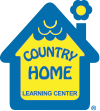 One of the more common respiratory viruses that occur in the fall and winter season is RSV, formally named Respiratory Syncytial Virus. For those of you who have known an infant born prematurely or a child with a chronic medical condition, the mention of the letters RSV may elicit reactions of great concern from their parents. Since RSV is a common illness experienced by children attending daycare, let’s talk about the facts of RSV.
One of the more common respiratory viruses that occur in the fall and winter season is RSV, formally named Respiratory Syncytial Virus. For those of you who have known an infant born prematurely or a child with a chronic medical condition, the mention of the letters RSV may elicit reactions of great concern from their parents. Since RSV is a common illness experienced by children attending daycare, let’s talk about the facts of RSV.
RSV is a contagious viral illness that causes irritation and congestion of the nose and airway passages. Since adults and healthy older children have larger airways, RSV usually causes mild cold symptoms including a cough. Because children have smaller airways and bronchial tubes, the same amount of congestion may cause more problems in them. Symptoms in the infant or smaller child include a more prominent cough and possibly wheezing along with the nasal congestion. When these symptoms occur in children less than the age of two, it is called bronchiolitis or what I refer to as “Baby Bronchitis”. RSV is such a common illness that 60% of children are infected during their first season of exposure. Most children have had it by the age of 2. Of all the children who are infected, only about 2-3% meets the criteria for having bronchiolitis. Young children at risk for more severe problems with RSV are infants born prematurely, children with chronic lung conditions such as asthma, infants whose immune systems do not work well, and children with heart conditions. That makes sense since these children either have smaller bronchial tubes or tubes that are more vulnerable to the irritation cause by the RSV virus.
So if your child is infected by RSV, you can expect the symptoms to develop in 4-6 days and last about 2 weeks (range 1-3 weeks). There is no specific treatment for RSV; antibiotics do not help. Treatment is largely symptomatic. Sneezing and cough is the most efficient way for anyone to clear their airway passages. That is why these symptoms occur until the infection clears. Smaller children will benefit from humidification and nasal suctioning. Keep your child well hydrated by offering fluids more frequently. Breathing treatments are usually not helpful unless your child has one of the above risk factors or has a severe case. The main treatment for children requiring hospitalization is still supportive care with oxygen and IV fluid. The danger signs indicating a more severe case of RSV and need for immediate medical attention are:
- Fast or troubled breathing that prevents the infant or child from being able to drink
- Spreading out of the nose (flaring) and/or caving in of chest or abdomen (retractions)
- Gasping for air
- Bluish discoloration around the mouth or fingernail
Attending daycare places children in an environment where RSV is likely to occur. So how do you help prevent the spread of RSV? The most important preventive measures are hand washing and covering the mouth when coughing. Avoiding ill contacts is also important. If your child has RSV they should not return to daycare until he/she is fever free for at least 24 hours and eating and sleeping patterns are getting back to normal. Since most children get RSV by the age of 2, even these measures do not prevent it. Take extra care if your child has one of the risk factors and follow your pediatrician’s advice. Know what the danger signs are. And remember, the vast majority of children experience RSV, and most do very well after a few days and sleepless nights.

